During the hill trips us reindeer herders will often be asked questions such as “what will you do with the rest of your day?” or “is doing the hill trips the best part of the job?”
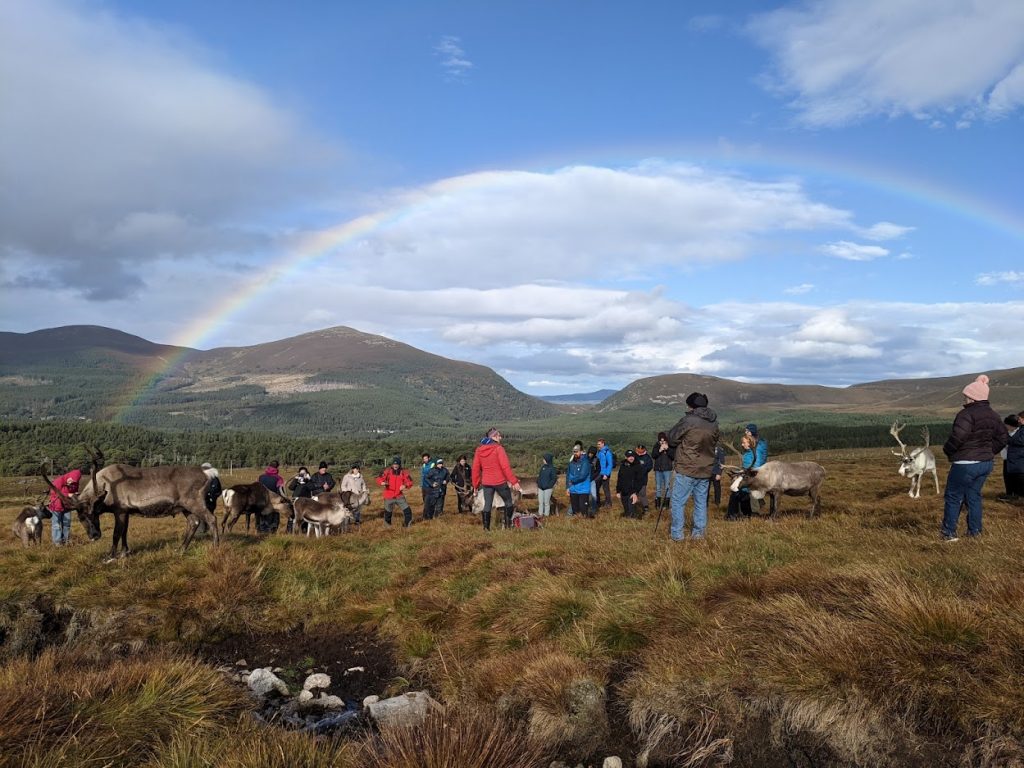
In this week’s blog I will chronologically outline a ‘typical’ day for a reindeer herder. However, it is worth noting that it’s almost impossible to predict how a day may take shape. The job tends to be incredibly variable and diverse. There are time-dependent jobs that may suddenly arise, such as moving reindeer from where they’re not meant to be to. For example, when they venture down from the mountains on to the road. There are also plenty of seasonal-dependent jobs, such as gardening or leading additional hill trips in the summer months. Or in the winter months you may need to clear footpaths to keep them free from snow and ice. Not to mention the early starts that occasionally occur. These tend to be in the calving season or on the epic days when reindeer need to be moved across the Cairngorms. It’s possible that you could be helping Tilly over at Wild Farm as well, transporting reindeer from the farm to the Cairngorms and vice versa, or helping with the other animals there. The list of possibilities is vast.
Nonetheless, the skeleton of a ‘typical’ reindeer herding day is as follows:
08:00 (summer) or 08:30 (winter): Work starts. Turn up and prepare to be greeted by the dogs.
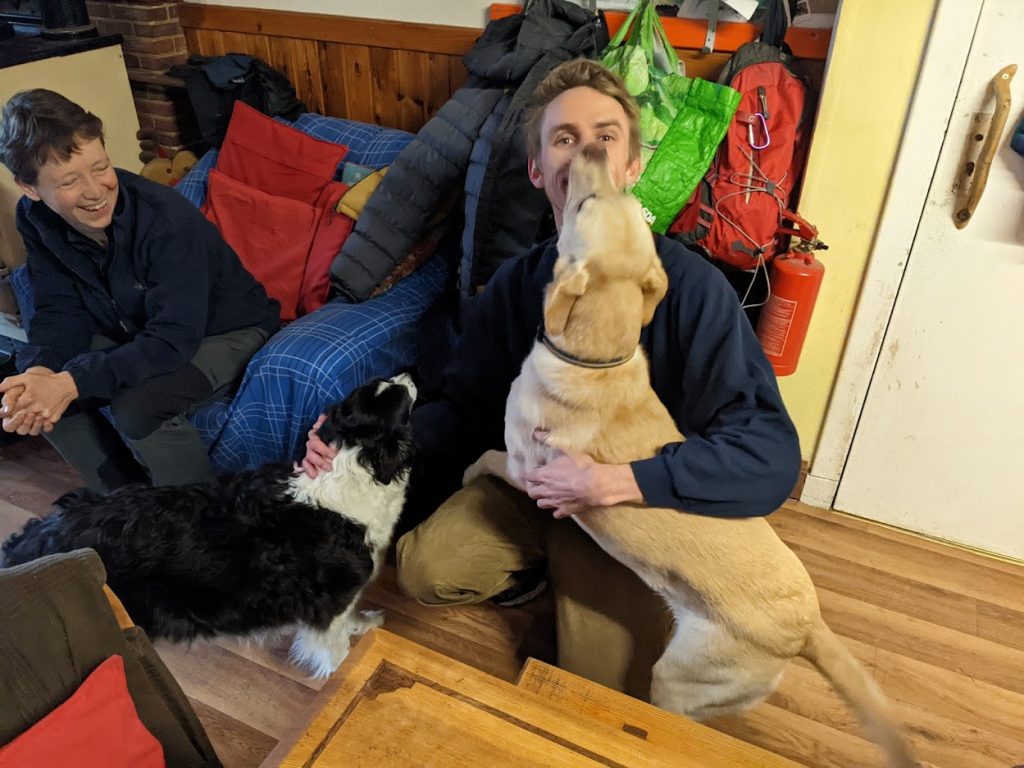
There typically may be anywhere between 4 and 7 herders working on a day, depending on the business of the season. Half of us will initially head up to feed the herd their breakfast whilst half of us will stay down at the Centre.
Those of us which stay down at the Centre will be responsible for feeding the paddock reindeer their breakfast, poo picking, cleaning the exhibition, answering emails and any phone calls, cleaning the shop and office, as well as opening the shop and checking in guests after 10am.
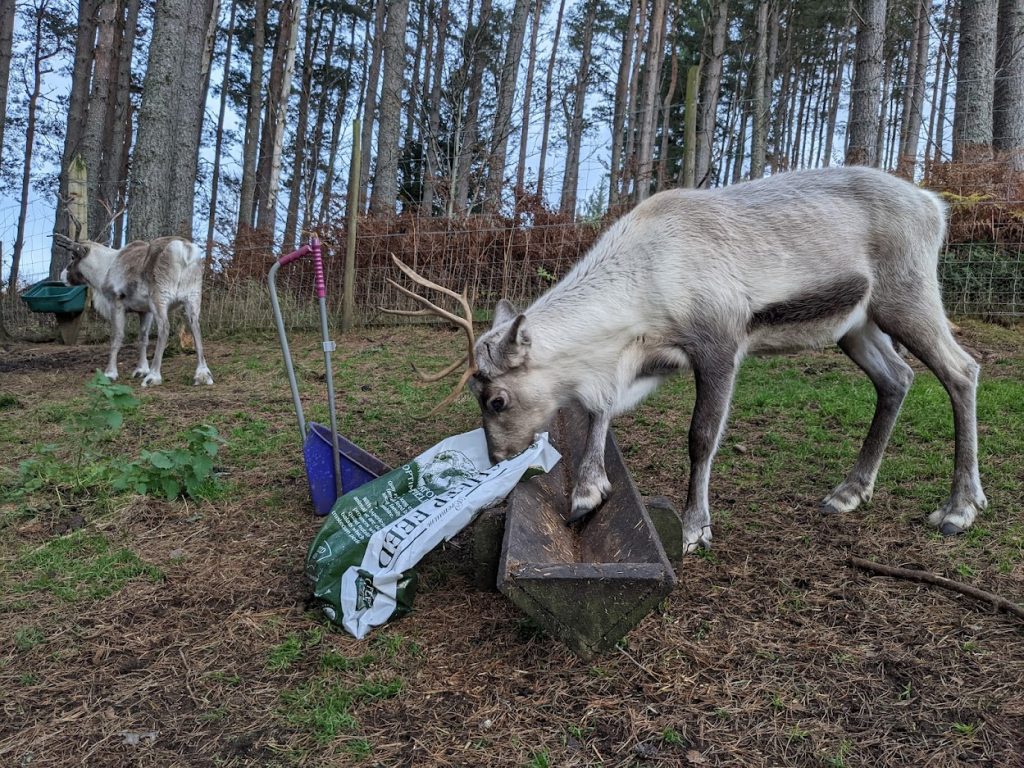
The cohort of herders which head up the mountain to feed the herd will initially have to locate the herd. The difficulty of which can depend on weather conditions and whether the reindeer are free-roaming or in the hill enclosure. As I write this – at the end of February 2022 – it took Andi and I three hours to venture out in the snow to where the reindeer were located and then lead them closer to where the 11am hill trip would be.
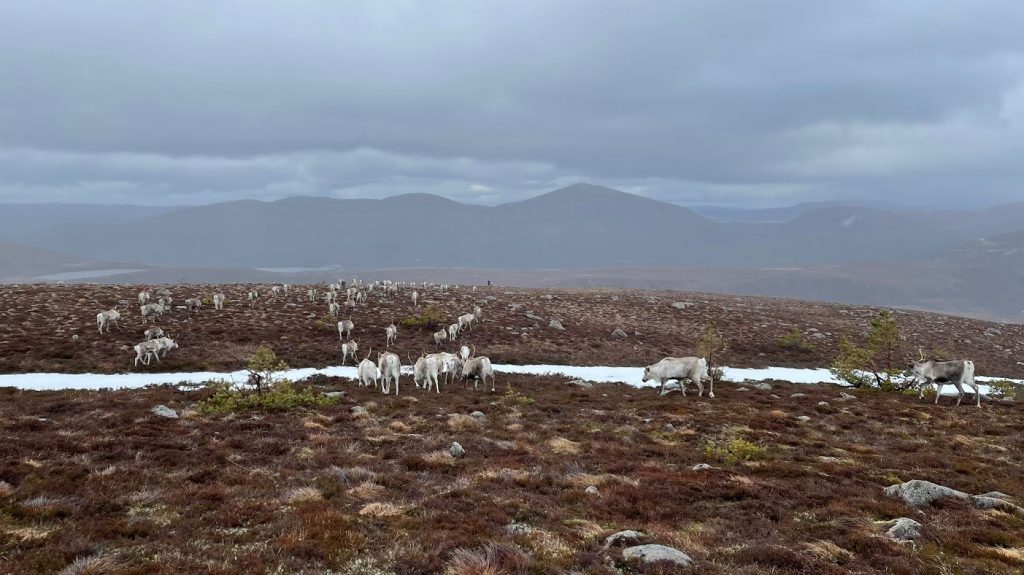
It is at this point in the day which we’re most likely to check the temperature of a reindeer – if we suspect illness – and administer any appropriate treatment. Before the morning feed is put down in a straight line (easier to count) with spaces of approximately 1m in between each pile (to try to stop fighting) there may be a spot of preferential feeding. The young calves are encouraged to come and feed out of the bags whilst one herder will circulate around the herd enticing the less tame reindeer to hand-feed. This preferential feeding is very important for the management of reindeer when they become ill. Catching reindeer can be a long ordeal but it’s important if a reindeer is ill that we can get close enough to help them, so by enticing them into the smaller hand-food bag throughout the year they hopefully won’t always associate the food bag with feeling rubbish. The preferential feeding also allows the young, growing calves to get a bit of extra food from the main bag as they are likely to be lower in the pecking order when it comes to feeding from the line and can get the sustenance they need to continue growing.
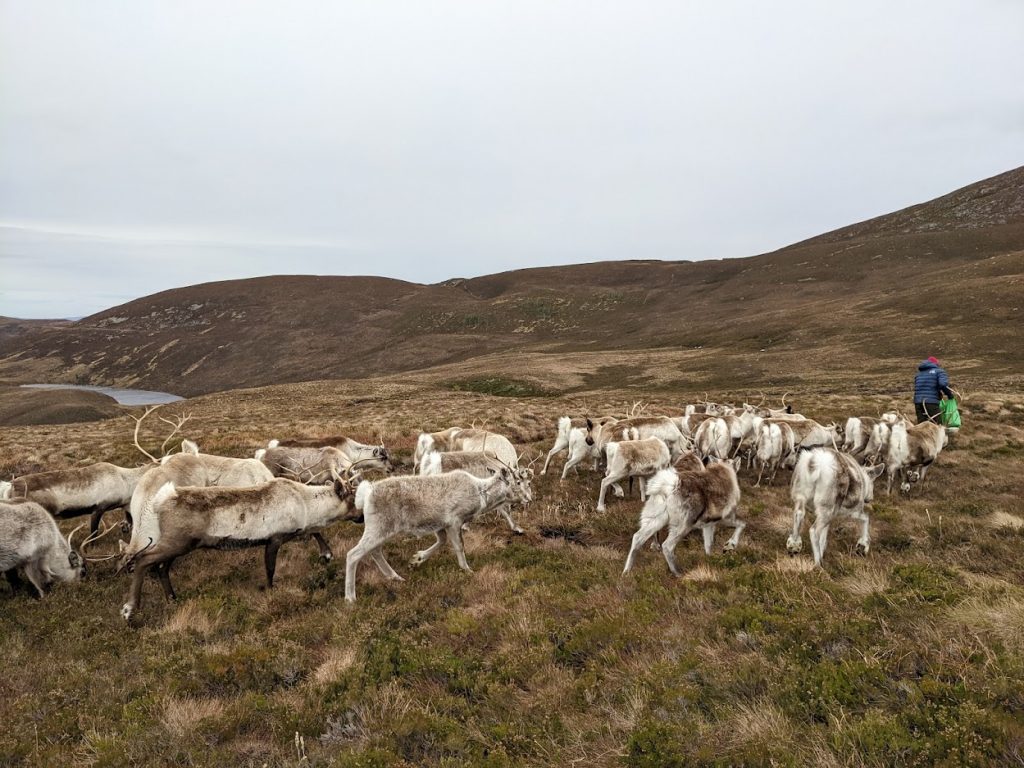
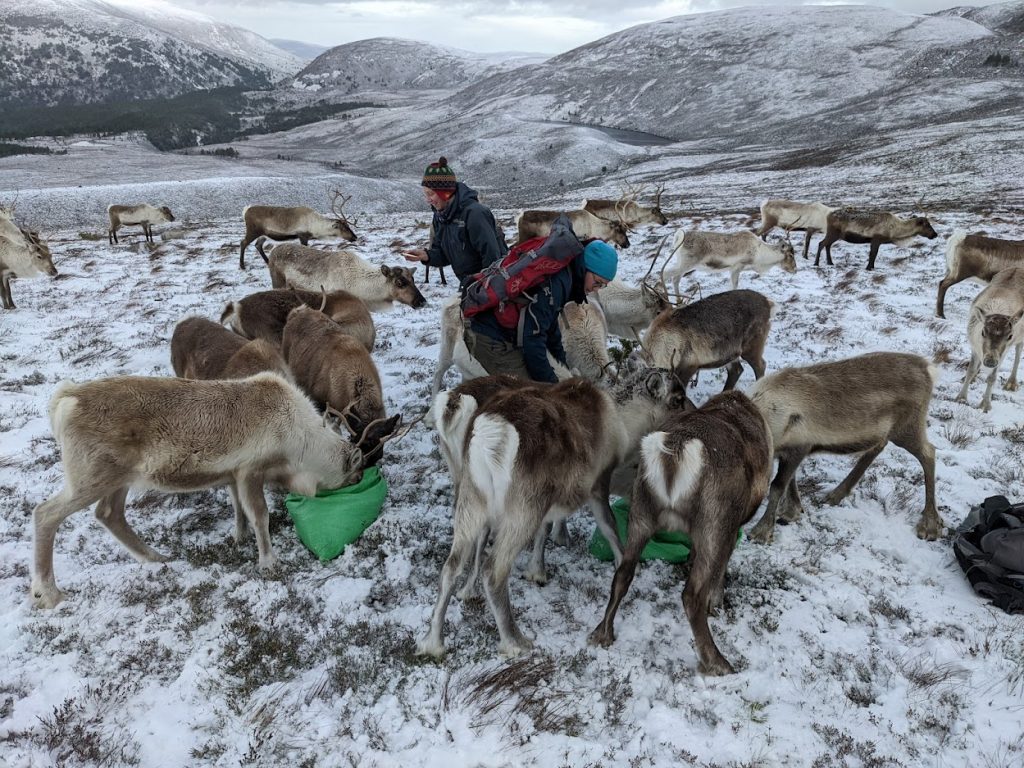
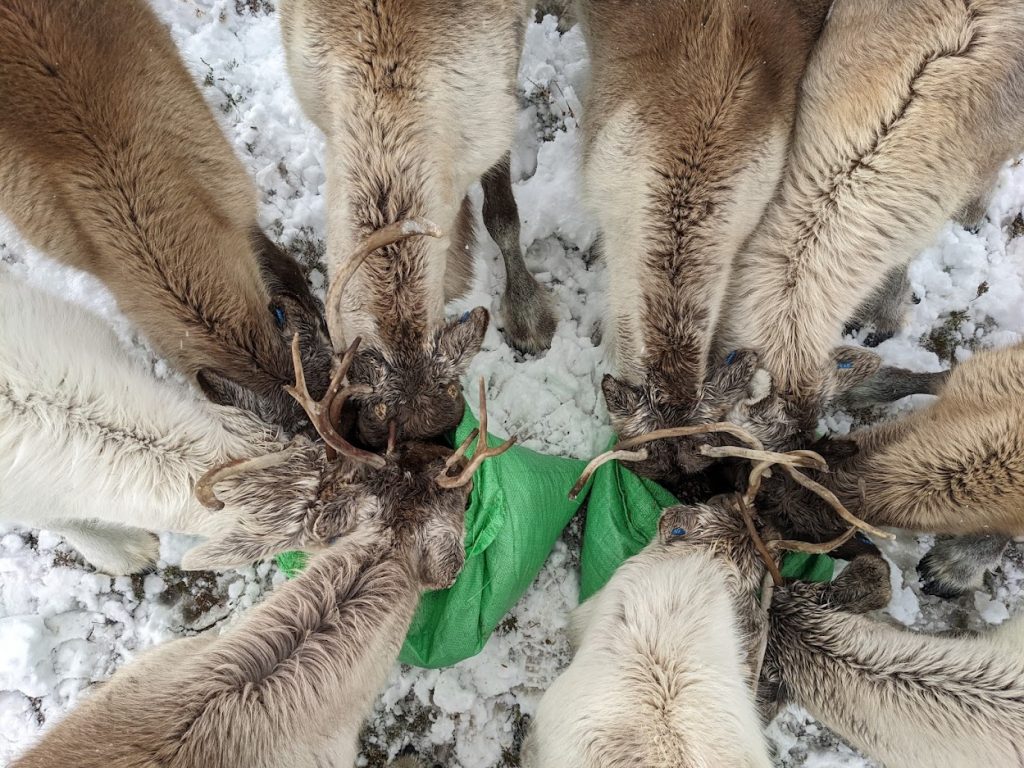
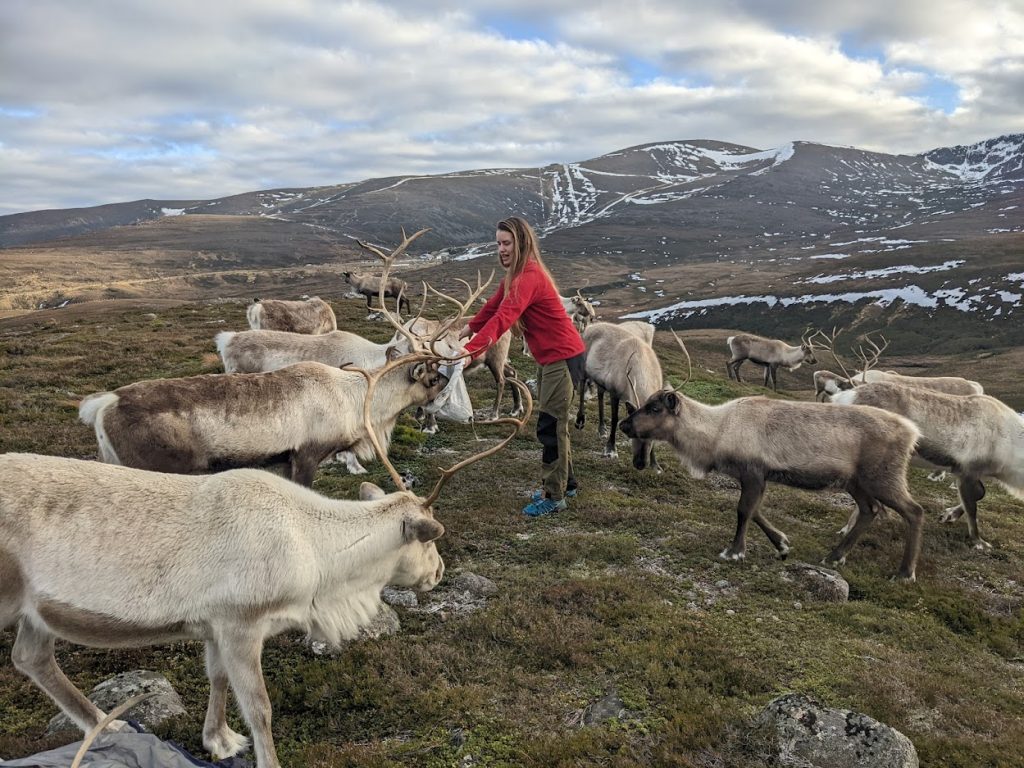
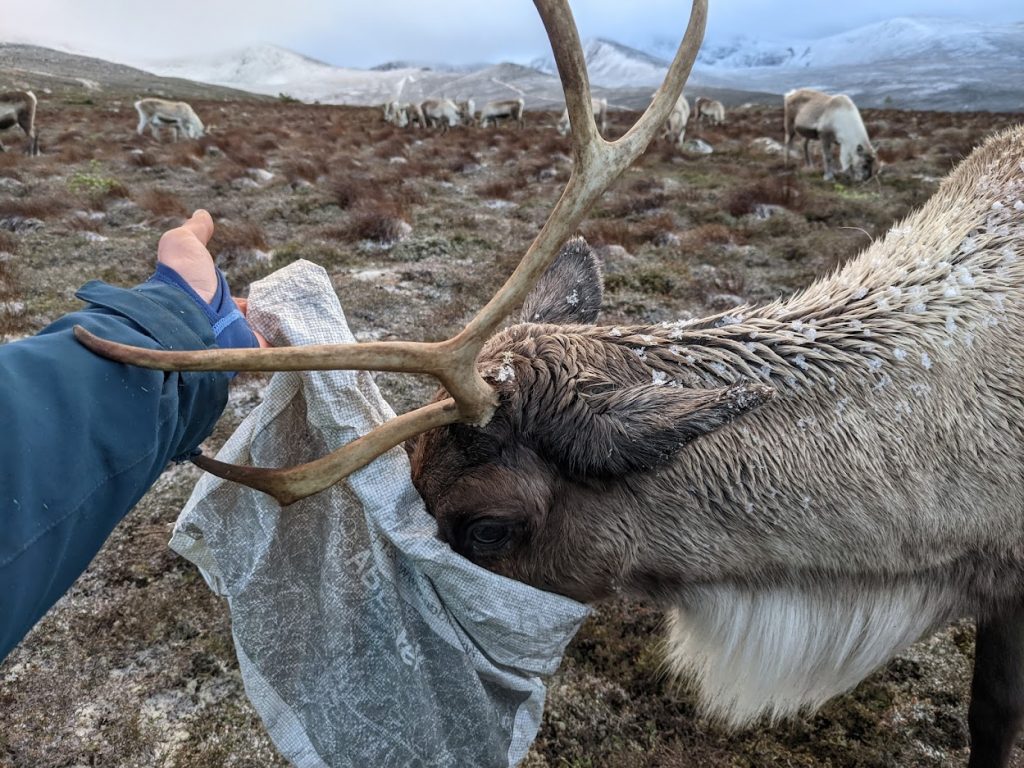
11:00: Hill trip. This is the time when some of our herders are let loose to come and meet yourselves and serenade you with some interesting reindeer-related facts and some terrible reindeer-related jokes. This typically lasts for an hour and a half to two hours, depending on the weather.

Those herders that don’t participate in the hill trip will be responsible for staying at the Centre and minding the shop, dealing with phone calls and emails, compiling adoption packs for our loyal adopters, mixing reindeer food or even, writing blogs.
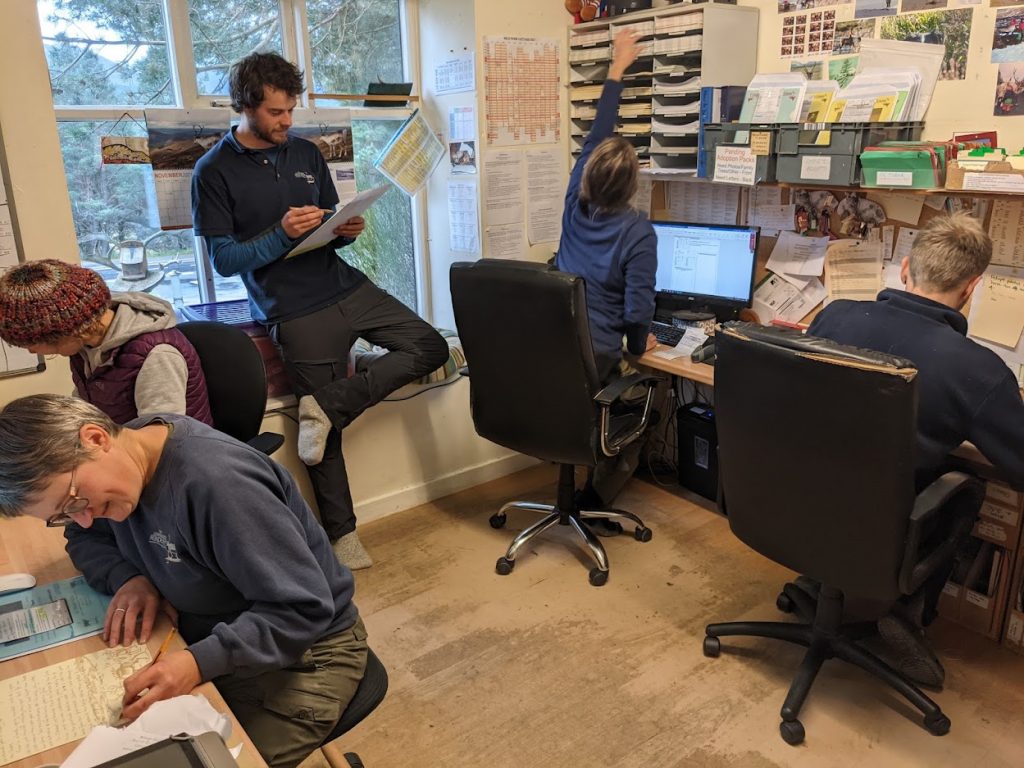
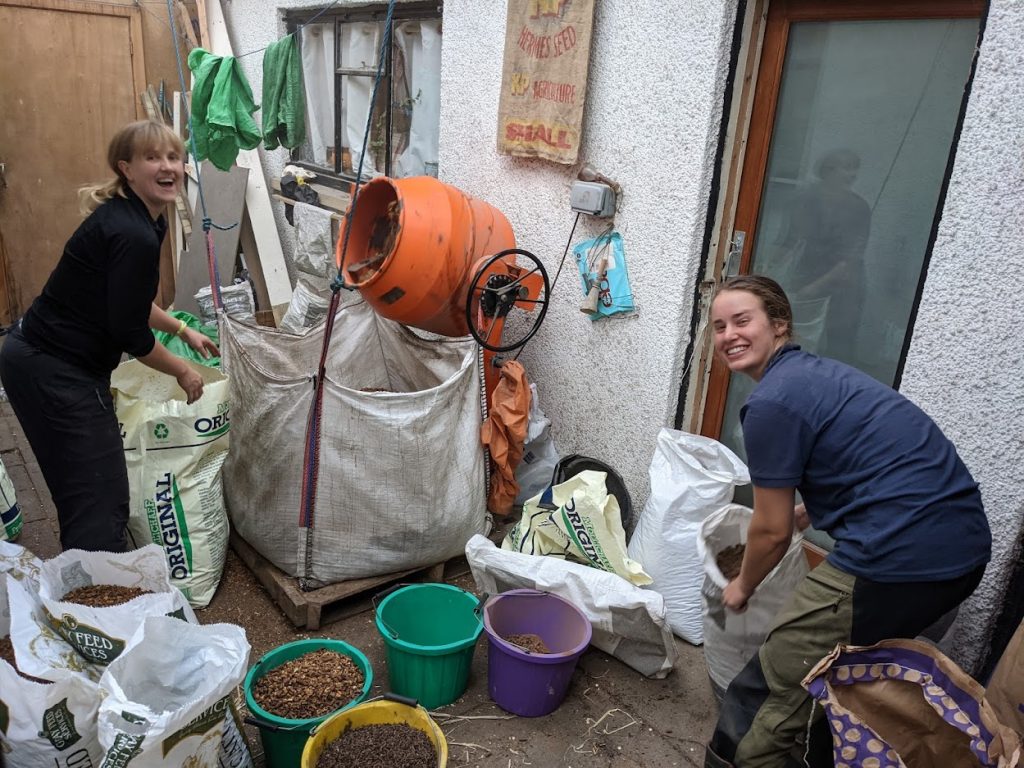
12:30 – 2: The herders stagger their lunches to ensure someone is always free to mind the shop. Shop visitors can often be caught commenting on the lovely smells coming from the kitchen.
The afternoon: Whilst the morning of a reindeer herder is fairly constant and predictable year-round, the afternoon can vary depending upon the time of year. From May to September there is an additional hill trip at 2:30. During these months the hill trips take place in our hill enclosure so the chance of seeing reindeer is almost definite, and the walk out to see them is shorter and less exposed to the elements. The reindeer herding day generally runs to 5pm, although in July and August we run a third daily tour at 3:30. So for a couple of months the day runs until 5:30.
Recently, we’ve also started been doing ‘Seasonal Herder Talks’ during the school holidays. This means throughout the afternoon one of the reindeer herders will be out in the paddocks talking to visitors about the reindeer and answering any questions.
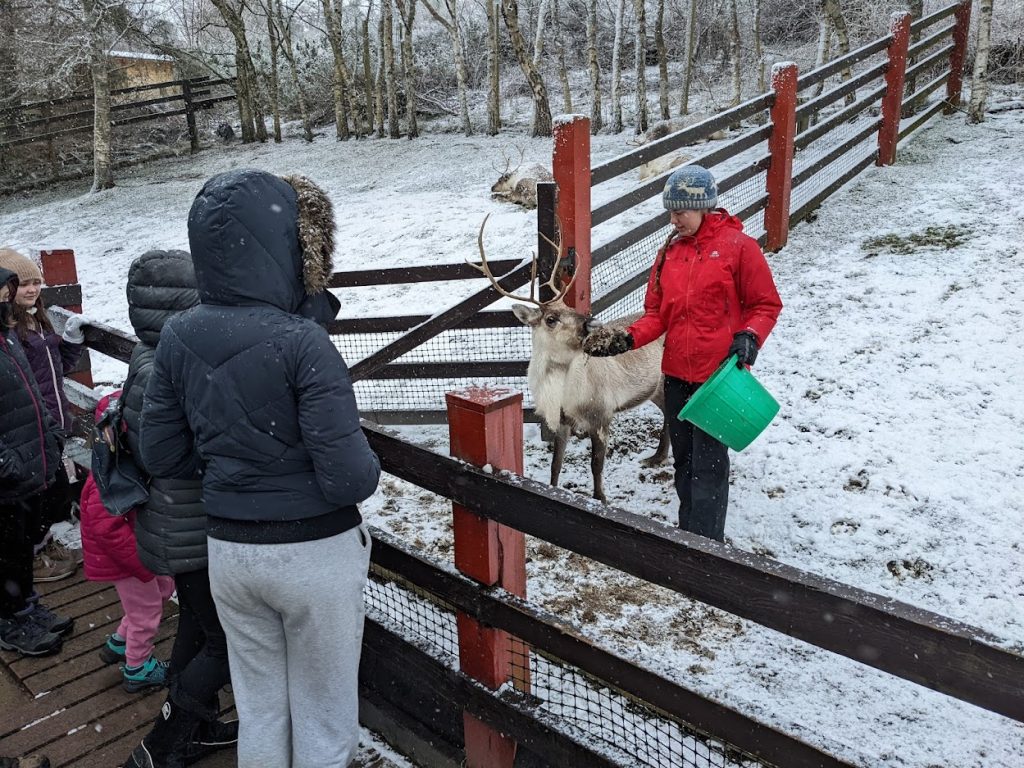
Close: At about 4:45 the herders will start to perform the closing dance. This involves one of us cashing up the totals from the shop whilst another herder will head out to the woods located behind the paddock area and put food out for the paddock reindeer. Just before 5 o’clock the reindeer will be let through to the woods area whilst the herder closes and wipes down the exhibition area. The shop will also be shut and wiped down at 5pm. You can always tell it’s 5 o’clock as the dogs begin to stir. They become more energetic and boisterous as they realise the working day is ending and there is now a high chance of them heading out on a walk or run with at least one herder.
Approximately half of the reindeer herders live on-site at the Centre, whilst half of us journey in from the local area. Having some staff on-site means that on the very rare occasion where there is a reindeer emergency after hours, there is staff that can stick their capes on and come to the rescue.
Ben B
